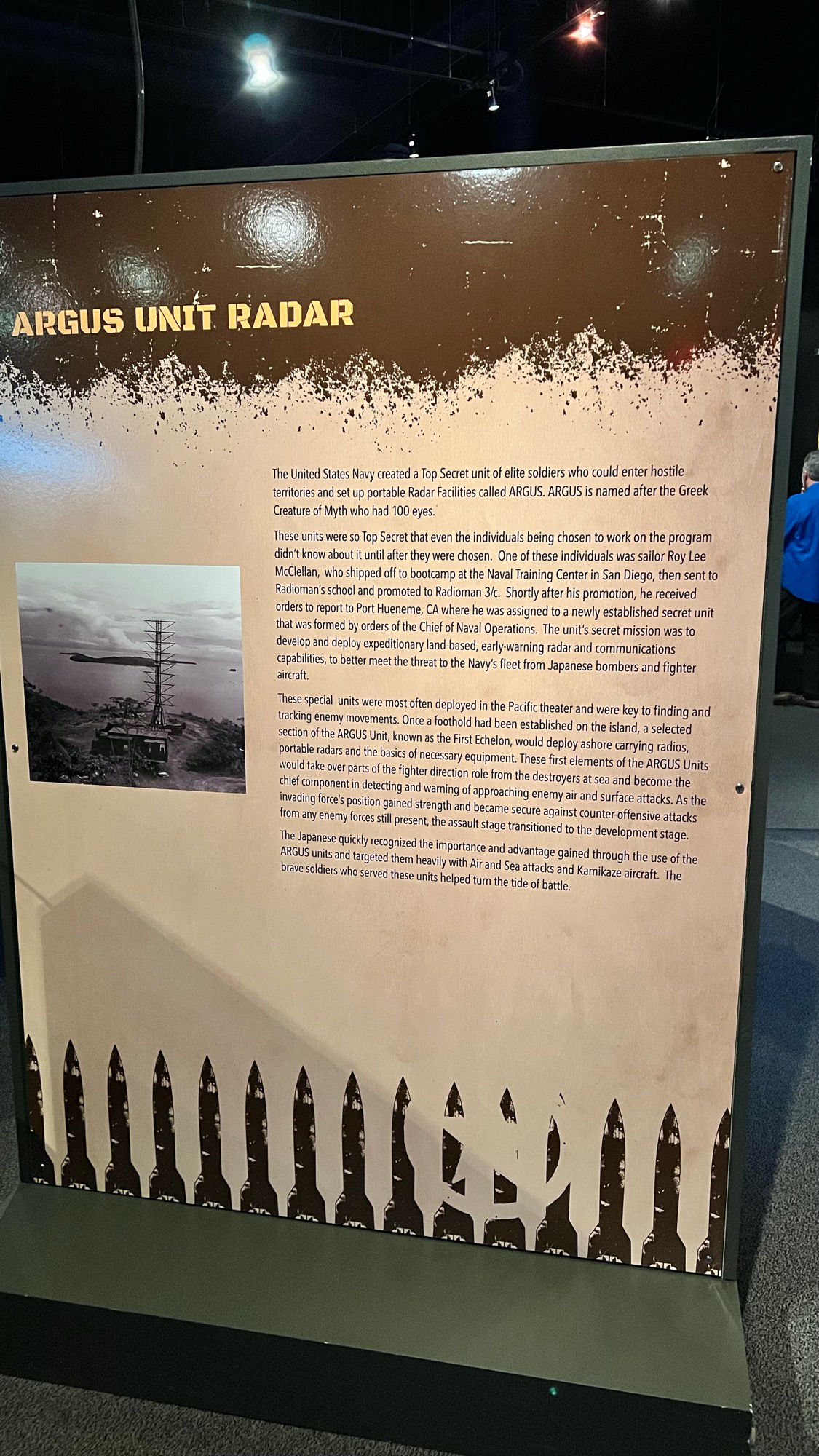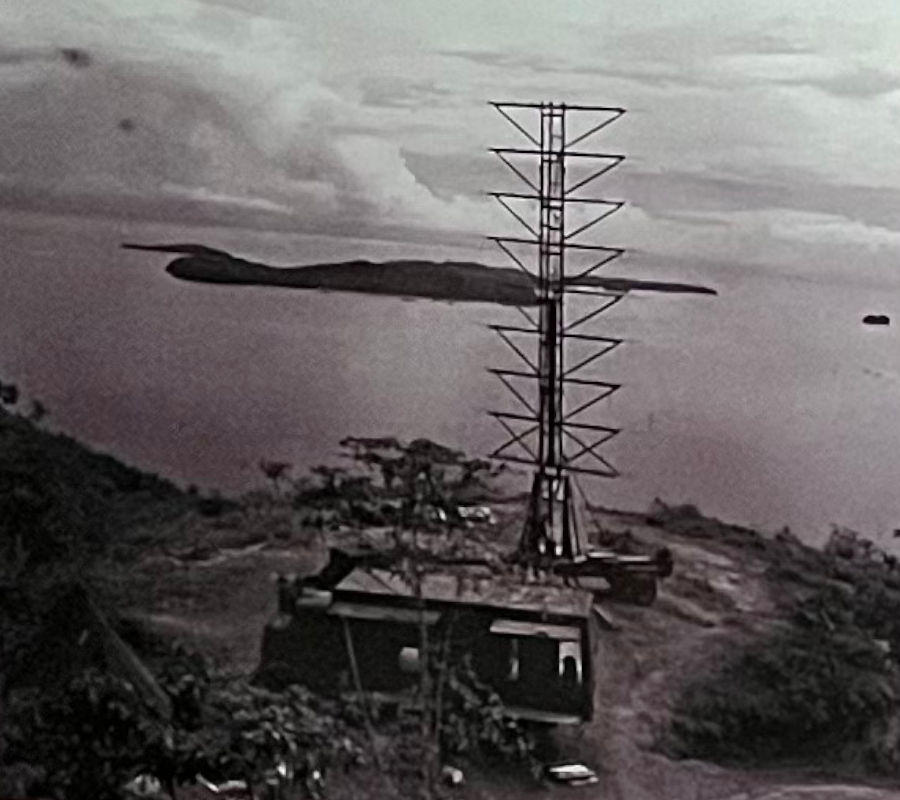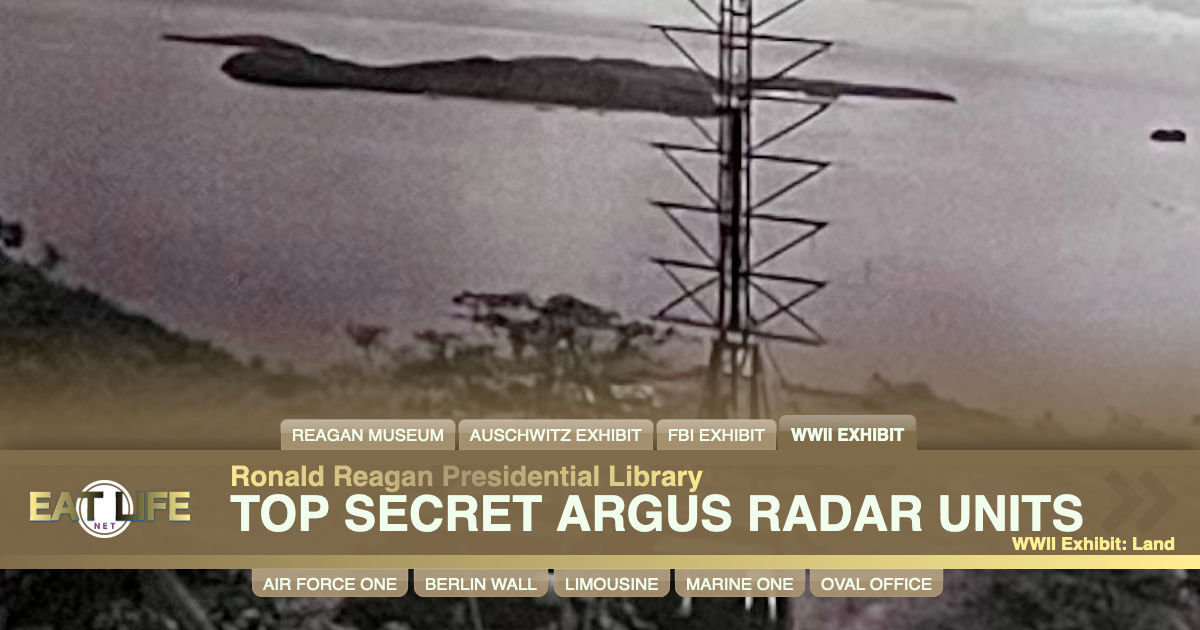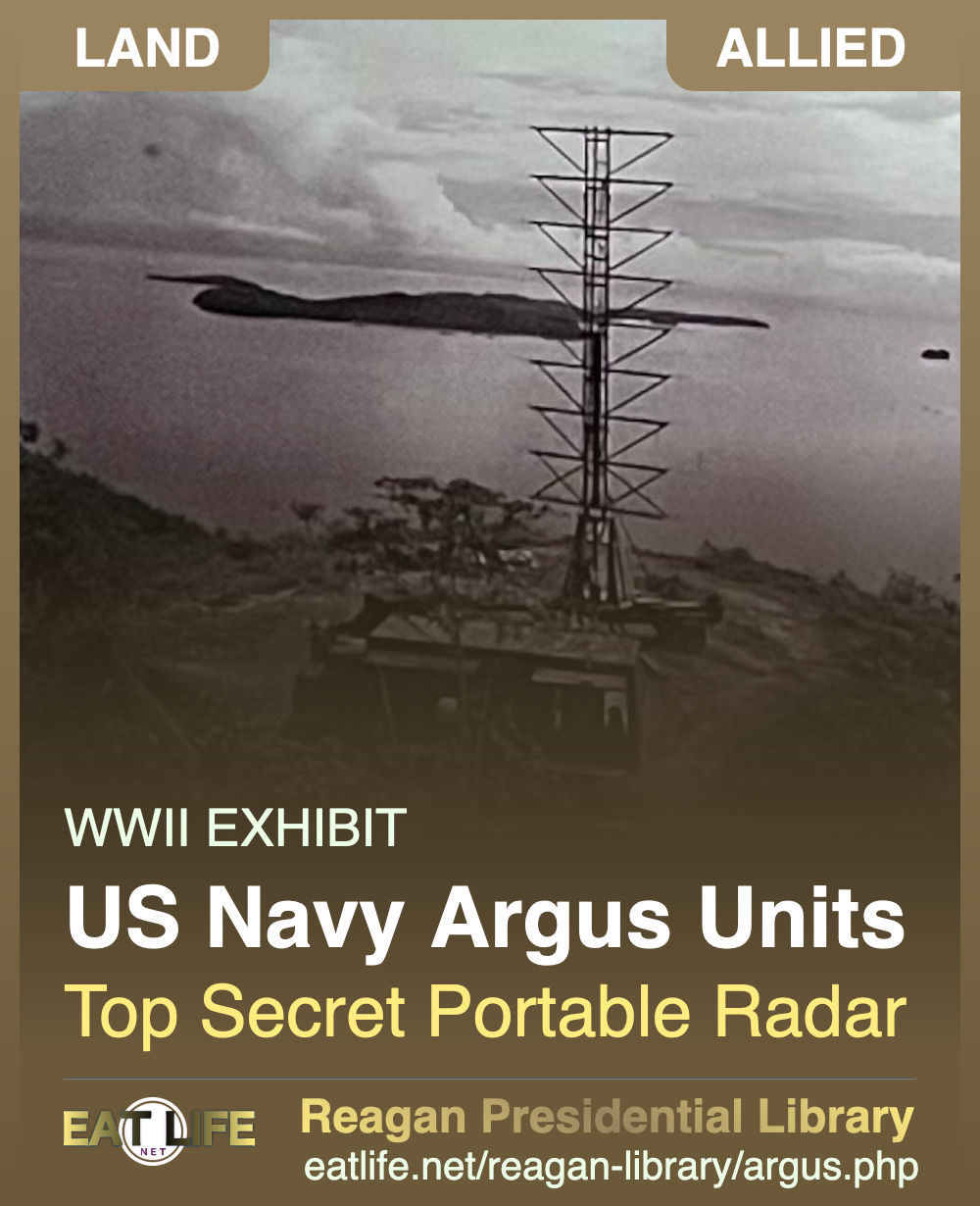The United States Navy created a Top Secret unit of elite soldiers who could enter hostile territories and set up portable Radar Facilities called Argus. Argus is named after the Greek Creature of Myth who had 100 eyes. The Japanese quickly recognized the importance and advantage gained through the use of the Argus units and targeted them heavily with Air and Sea attacks and Kamikaze aircraft. The brave soldiers who served these units helped turn the tide of battle.

The United States Navy created a Top Secret unit of elite soldiers who could enter hostile territories and set up portable Radar Facilities called Argus. Argus is named after the Greek Creature of Myth who had 100 eyes.
These units were so Top Secret that even the individuals being chosen to work on the program didn't know about it until after they were chosen. One of these individuals was sailor Roy Lee McClellan, who shipped off to bootcamp at the Naval Training Center in San Diego, then sent to Radioman's school and promoted to Radioman 3/c. Shortly after his promotion, he received orders to report to Port Hueneme, CA where he was assigned to a newly established secret unit that was formed by orders of the Chief of Naval Operations. The unit's secret mission was to develop and deploy expeditionary land-based, early-warning radar and communications capabilities, to better meet the threat to the Navy's fleet from Japanese bombers and fighter aircraft.
 These special units were most often deployed in the Pacific theater and were key to finding and tracking enemy movements.
Once a foothold had been established on the island, a selected section of the Argus Unit, known as the First Echelon, would deploy ashore carrying radios, portable radars and the basics of necessary equipment.
These first elements of the Argus Units would take over parts of the fighter direction role from the destroyers at sea and become the chief component in detecting and warning of approaching enemy air and surface attacks.
As the invading force's position gained strength and became secure against counter-offensive attacks from any enemy forces still present, the assault stage transitioned to the development stage.
These special units were most often deployed in the Pacific theater and were key to finding and tracking enemy movements.
Once a foothold had been established on the island, a selected section of the Argus Unit, known as the First Echelon, would deploy ashore carrying radios, portable radars and the basics of necessary equipment.
These first elements of the Argus Units would take over parts of the fighter direction role from the destroyers at sea and become the chief component in detecting and warning of approaching enemy air and surface attacks.
As the invading force's position gained strength and became secure against counter-offensive attacks from any enemy forces still present, the assault stage transitioned to the development stage.
The Japanese quickly recognized the importance and advantage gained through the use of the Argus units and targeted them heavily with Air and Sea attacks and Kamikaze aircraft. The brave soldiers who served these units helped turn the tide of battle.
WikipediaThe United States Navy created the Argus Training program during the first stages of World War II in the Pacific. The Argus program was strategically designed to train and deploy elite amphibious combat teams able to land in potentially hostile territory and rapidly deploy radar and radio communications equipment, thus paving the way for the beginnings of effective land based fighter aircraft direction. This coordinated fighter direction allowed for interception and prevention of enemy air and surface attacks on allied Pacific bases.The name Argus, referring to a mythological Greek being with 100 eyes, was chosen to symbolize the 'all-seeing' radar of the Argus Units.
As assaults opened against occupied islands, a task force consisting of carriers, battleships or cruisers and destroyers would strike first, firing on enemy defenses and attacking with available carrier-borne aircraft. Ships bearing a United States Marines amphibious strike force would send strike force troops ashore by landing craft. Fighter Director Officers aboard destroyers close at sea were tasked with directing allied aircraft to intercept and repel any enemy air forces that may have been alerted to the invading strike force. Once a foothold had been established on the island, a selected section of the Argus Unit, known as the first echelon, would deploy ashore carrying radios, portable radars and the basics of necessary equipment. These first elements of the Argus Units would take over parts of the fighter direction role from the destroyers at sea and become the chief component in detecting and warning of approaching enemy air and surface attacks. As the invading force's position gained strength and became secure against counter-offensive attacks from any enemy forces still present, the assault stage transitioned to the development stage.
In the island development stage, a Navy ACORN unit, composed of a Naval Construction Battalion (Seabees) and other components, construct an airfield. Simultaneously, the remainder of the Argus Unit moved in in waves, setting up the long range 270 radars, the fighter direction 527 radar and surface search radars (such as SO-7M). These remaining Argus personnel are also responsible for erecting the Combat Information Center, the radio tent and telephone lines and for establishing a liaison with Air Command, anti-aircraft batteries, searchlight batteries, PT Boat squadrons, crash boats and other relevant commands. Fighter direction and air warning roles were supplied for the base by the Argus Unit while continuous contact was maintained with other Argus Units and surface forces in the immediate area.
As the island transitioned to an occupation stage, the Army Air Corps assumed control of the airfield and set up permanent airfield and air warning facilities. The Argus Unit returned to a staging point for rest and replacements.







